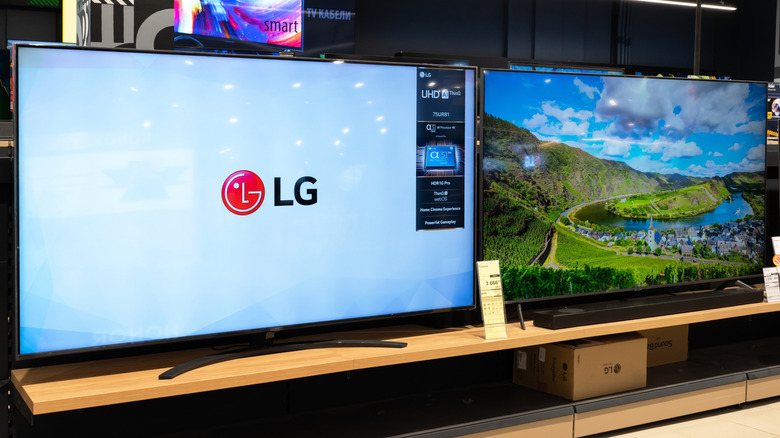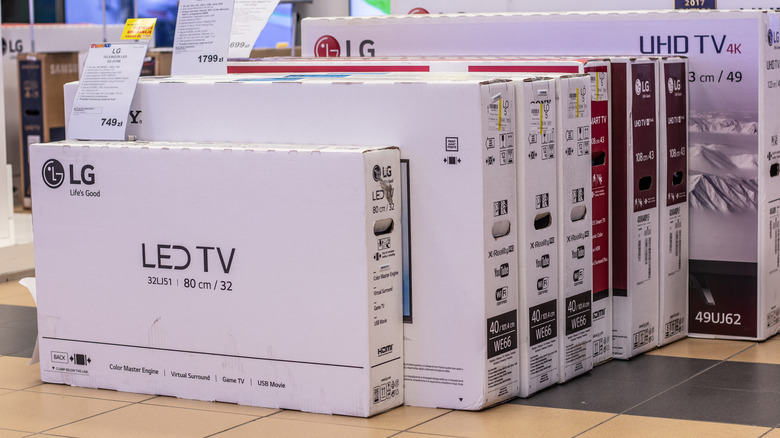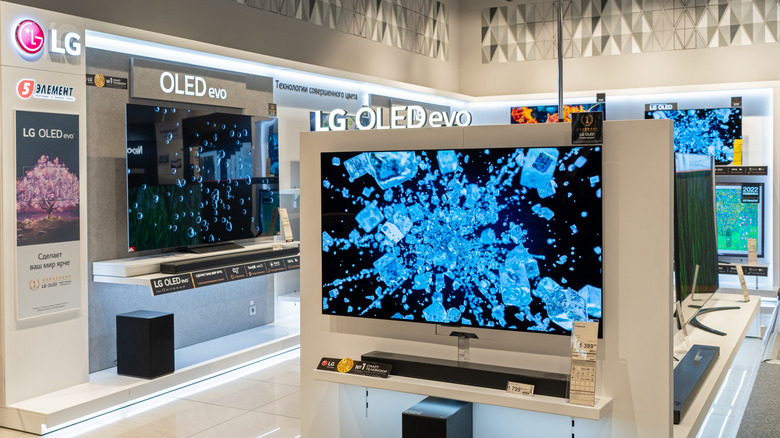LG TVs: Here's Who Makes Them And Where They're Manufactured
We may receive a commission on purchases made from links.
LG is currently the world's largest manufacturer of OLED televisions, such as the stunning entry-level B4 OLED. This tech giant began as the Lucky Chemical Company, established in 1947 by South Korean businessman In-hwoi Koo. As the company expanded over the years, it established GoldStar in 1958. Twenty-five years later, in 1983, Lucky and GoldStar merged to form Lucky Goldstar, or what we now know as the LG Corporation.
Today, the LG Corporation owns a variety of companies spanning the electronics, chemicals, and communications sectors. Of these, LG Electronics, founded in 1995, is perhaps the most well-known. It's become a household name, renowned for its wide range of consumer electronics and home appliances. Headquartered in Seoul, South Korea, the company has grown into a global powerhouse with manufacturing facilities, research labs, and sales offices across the world. With the tagline of "Life's Good," LG has established a reputation for delivering cutting-edge products that blend sleek design with smart functionality.
Where are LG TVs manufactured?
LG TVs are made by LG Electronics, which has over 200 global manufacturing units in different countries, including South Korea, China, Mexico, Poland, Indonesia, and India. Therefore, LG TVs are not produced in any single location. Instead, they are made at facilities across all of these countries and then shipped around the world.
Over the past few years, the company's strategy has involved developing regional hubs to supply nearby countries. Therefore, North America, including the U.S., is supplied by a manufacturing plant in Mexico, while Europe is supplied by a plant in Poland. However, specific components may be manufactured elsewhere and then shipped to the regional hubs for assembly. For instance, OLED panels are primarily manufactured at LG factories in South Korea and China.
Although LG has factories in the U.S., too, they focus on different appliances. For instance, a state-of-the-art facility in Clarksville, Tennessee, serves as the base for LG's award-winning washers and dryers. Similarly, it has an EV charger production factory in Fort Worth, Texas.
Many key facilities are still in South Korea, such as the research center in Gumi, focusing on the advancement of high-tech displays for the premium TVs. This is not surprising considering that LG Electronics first began its operations in South Korea, producing its first TV in 1966. Almost 60 years later, LG continues to innovate with unique products like its fully transparent OLED TV.
Should you buy an LG TV?
If you're in the market for a television that combines cutting-edge technology, sleek design, and long-lasting reliability, LG is a brand worth your money. It offers industry-leading OLED panels that are known to showcase vibrant colors and deep blacks. Moreover, it has a wide range of TVs at different price points that can fit any budget.
One great option for just under $1000 is the 65-inch B4 OLED Series that comes with an intelligent α8 AI Processor, which can automatically optimize your settings to suit whatever it is you're watching. Plus all LG OLED TVs feature Dolby Vision for stunning picture quality, colors, and brightness, as well as Dolby Atmos for top-notch surround sound.
If you're willing to splurge a bit more, go for the C4 OLED that has an even more advanced α9 AI processor and tops our list of the best smart TVs.


